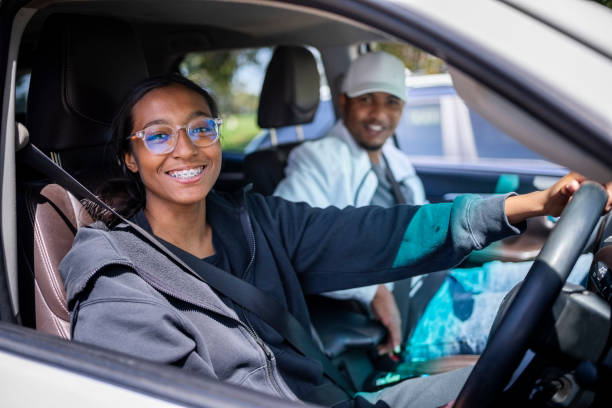In Kenya, passing the National Transport and Safety Authority (NTSA) driving exam is a critical step toward earning a driving license. Among the intriguing questions candidates encounter is, “How many eyes does a driver have?” This question often sparks curiosity, as it tests not only knowledge but also a driver’s awareness of their surroundings. The answer, as per NTSA guidelines, is three: two natural eyes and one artificial eye, referring to the vehicle’s mirrors. This article explores the meaning behind this question, its relevance to safe driving in Kenya, and tips to ace your NTSA exam.
Understanding the “Three Eyes” Concept
The NTSA driving exam question about a driver’s eyes emphasizes situational awareness, a cornerstone of road safety. The “two natural eyes” refer to a driver’s physical vision, essential for observing the road, traffic signals, and pedestrians. The “artificial eye” symbolizes the vehicle’s mirrors—rearview and side mirrors—which act as an extension of a driver’s vision. According to NTSA’s road safety guidelines, effective use of mirrors is mandatory to monitor blind spots and make informed decisions. In 2024, Kenya reported over 4,000 road accidents, with poor situational awareness cited as a leading cause, underscoring the importance of this concept.
Why Mirrors Are a Driver’s Third Eye
- Rearview Mirror: Allows drivers to monitor traffic behind them without turning their heads, crucial on busy Kenyan roads like the Nairobi-Nakuru highway.
- Side Mirrors: Help detect vehicles in adjacent lanes, reducing risks during lane changes or overtaking, especially in urban areas like Nairobi and Mombasa.
- Blind Spot Checks: Mirrors, combined with shoulder checks, ensure drivers are aware of vehicles or pedestrians in areas not visible through natural vision.
Why This Question Matters in the NTSA Exam
The “three eyes” question is more than a quirky test item; it reflects NTSA’s focus on fostering defensive driving habits. Kenya’s roads, from the bustling streets of Nairobi to rural routes in Kitui, demand heightened vigilance due to diverse traffic conditions—matatus, boda bodas, and heavy trucks coexist, often unpredictably. The NTSA syllabus, updated in 2024, emphasizes mirror usage as part of the practical driving test, where candidates must demonstrate proper mirror checks before maneuvers. Failing to understand or apply the “three eyes” principle could lead to errors during the exam or, worse, accidents on the road.
Tips to Master This Concept for the Exam
- Practice Mirror Checks: Before starting the vehicle, adjust mirrors and practice checking them in sequence during mock drives.
- Understand Road Rules: Study the NTSA Highway Code, available on the NTSA website, to grasp mirror-related regulations.
- Simulate Real Scenarios: Practice driving in varied Kenyan settings, like roundabouts in Kisumu or traffic-heavy Thika Road, to internalize mirror use.
Preparing for the NTSA Driving Exam in 2025
To excel in the NTSA driving exam, candidates must blend theoretical knowledge with practical skills. The “three eyes” question is a reminder that driving extends beyond physical ability—it’s about using tools like mirrors to enhance safety. Resources like the NTSA’s eCitizen portal and accredited driving schools in Nairobi, Mombasa, and Eldoret offer mock tests and guides to familiarize candidates with such questions. With Kenya’s road safety campaigns gaining traction in 2025, understanding concepts like the “artificial eye” can set you apart as a responsible driver.
The question “How many eyes does a driver have?” encapsulates the essence of safe driving in Kenya. By recognizing the role of mirrors as a driver’s third eye, candidates can better prepare for the NTSA exam and contribute to safer roads. As you gear up for your test, practice diligently, stay informed via credible sources like ntsanews.co.ke, and drive with all three eyes wide open.





